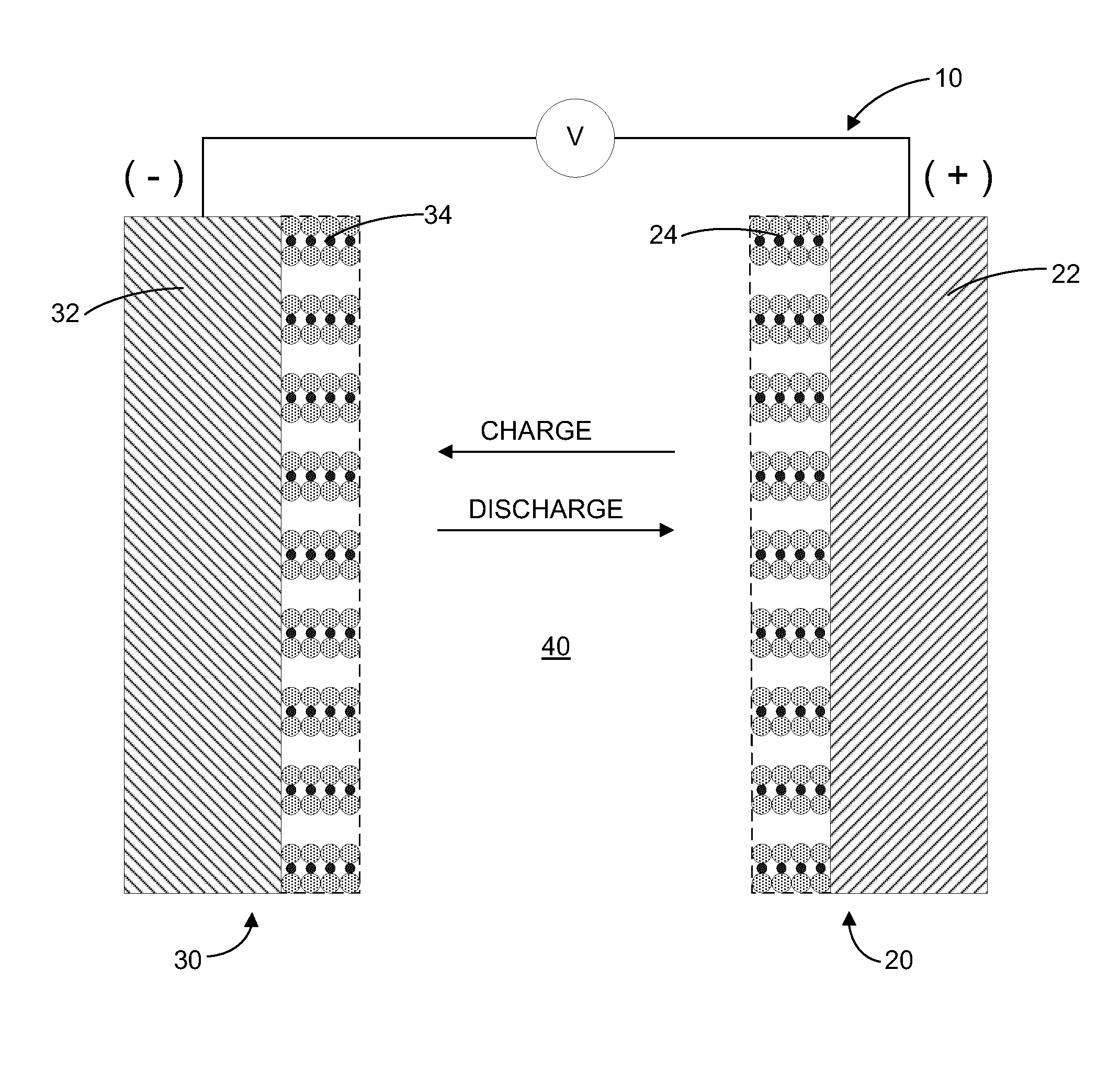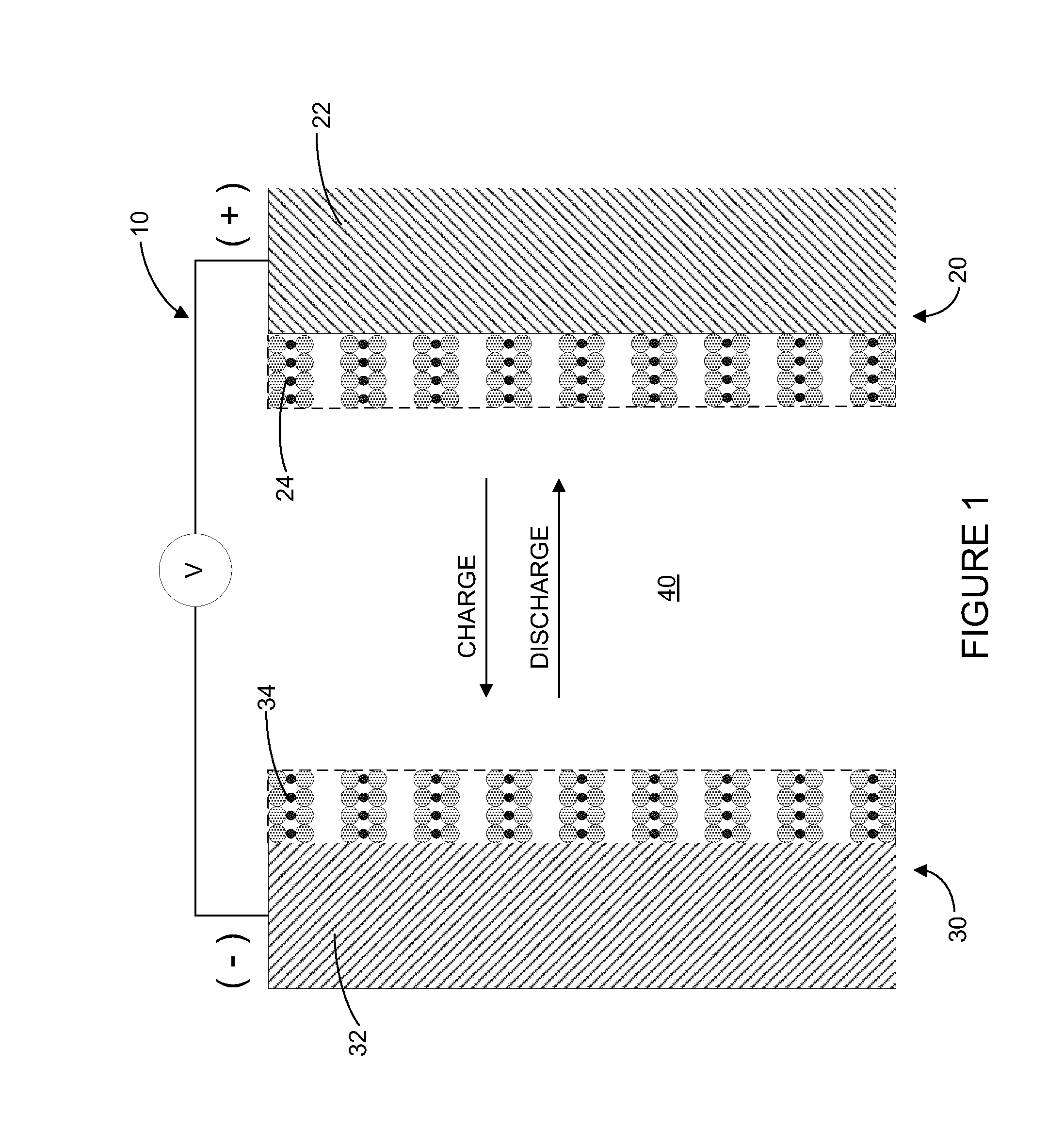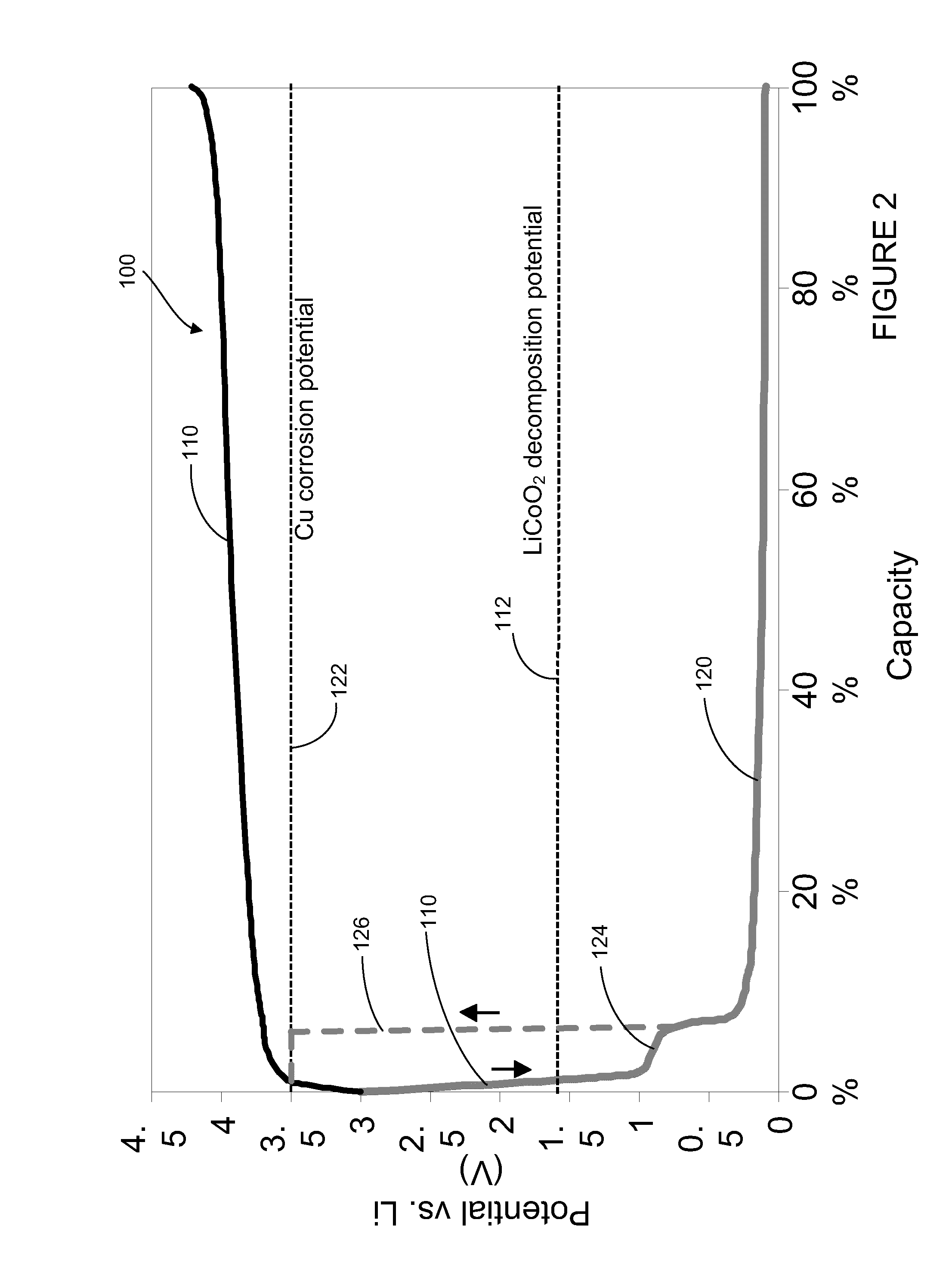Lithium-ion battery
a technology of lithium-ion batteries and ion batteries, which is applied in the field of lithium-ion batteries, can solve the problems of battery cases that exhibit battery that exhibits a dramatic loss of deliverable capacity, and reduces the protection against future over-discharge conditions
- Summary
- Abstract
- Description
- Claims
- Application Information
AI Technical Summary
Benefits of technology
Problems solved by technology
Method used
Image
Examples
Embodiment Construction
[0025]With reference to FIG. 3, a schematic cross-sectional view of a portion of a lithium-ion battery 200 is shown according to an exemplary embodiment. According to an exemplary embodiment, the battery 200 has a rating of between approximately 10 and 1000 milliampere hours (mAh). According to another exemplary embodiment, the battery has a rating of between approximately 100 and 400 mAh. According to another exemplary embodiment, the battery is an approximately 300 mAh battery. According to another exemplary embodiment, the battery is an approximately 75 mAh battery.
[0026]The battery 200 includes at least one positive electrode 210 and at least one negative electrode 220. The electrodes may be provided as flat or planar components of the battery 200, may be wound in a spiral or other configuration, or may be provided in a folded configuration. For example, the electrodes may be wrapped around a relatively rectangular mandrel such that they form an oval wound coil for insertion int...
PUM
 Login to View More
Login to View More Abstract
Description
Claims
Application Information
 Login to View More
Login to View More - R&D
- Intellectual Property
- Life Sciences
- Materials
- Tech Scout
- Unparalleled Data Quality
- Higher Quality Content
- 60% Fewer Hallucinations
Browse by: Latest US Patents, China's latest patents, Technical Efficacy Thesaurus, Application Domain, Technology Topic, Popular Technical Reports.
© 2025 PatSnap. All rights reserved.Legal|Privacy policy|Modern Slavery Act Transparency Statement|Sitemap|About US| Contact US: help@patsnap.com



